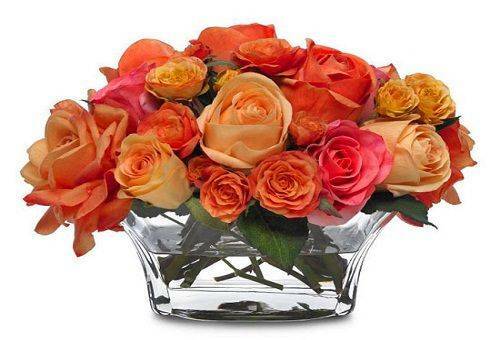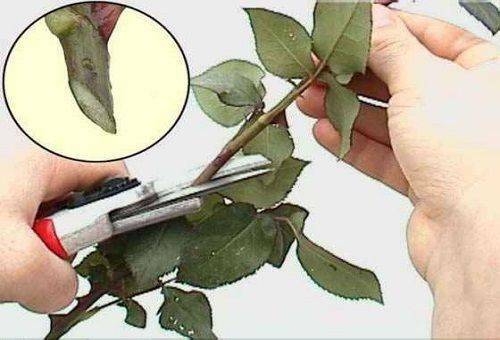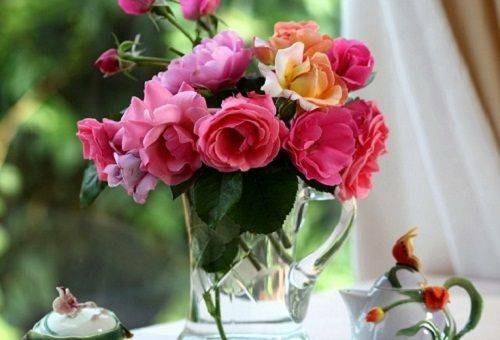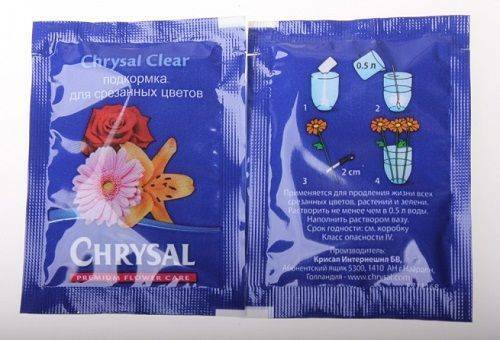Contents:
- Proper preparation of the bouquet and disinfection of water
- Suitable top dressing options for freshly cut flowers
- Where is the best place to put a bouquet and how to care for it?
Fresh flowers can transform even the most boring and dull decor, but the age of cut plants is very short. Fortunately, florists know how to keep a bouquet for a long time and with pleasure share their secrets with others. If you regularly perform all the manipulations, you can admire the beautiful flower arrangement in a graceful vase for several weeks. This will have to spend a lot of effort, but the result is definitely worth it.

And everything begins with the purchase of a bouquet, because today only a few are engaged in growing flowers. When choosing a suitable vegetative ensemble, you need to pay attention to the following:
- Petals and leaves should have a bright and juicy color. Dark spots and dried edges indicate the beginning of the wilting process and no measures will allow to preserve the bouquet longer than for several days.
- Short stems with a slimy, darkened cut are signs of old flowers.
- Recently cut plants are characterized by sufficient moisture and elasticity. If you bend a piece of leaf or petal, then it should quickly return to the place without the formation of bend marks.
- Sellers often try to hide the signs of wilting, removing individual parts of the flower. If a particular specimen looks naked, it is likely that he has come under such a correction.
The bouquet will stay in the vase for a long time only if it is made up of fragrant, literally moisture-exhaling flowers, with tight buds and tightly seated leaves in the boxes.

Correct preparation of the bouquet and disinfection of water
Cut flowers last many times longer if the following manipulations are carried out before installing them in the vase:
- The stems are dipped into water and we make an oblique cut on each stalk. After this, it is no longer possible to remove the plant from the liquid. This procedure prevents the process of blockage of blood vessels with air bubbles, which causes dehydration of the flower.
- Just before placing the bouquet in the vase you need to remove all the leaves, antennae and spines that will be located in the water. Then the multiplication of bacteria will slow down, and the absorption of nutrient components by unnecessary elements will be reduced.
- Very dense and thick stems need not only to be cut, but also split 5 cm deep by inserting a match into the faults. Then the flowers will not experience a moisture deficit and will stand longer.

Tip: The same method can be applied to tender plants with soft stems. In this case, the cut surface needs only to be scratched with a sharp needle, this will noticeably increase the absorbing capacity of the element.
- Special attention should be given to specimens with hollow stems. They should be carefully poured water and plug the holes with cotton or gauze. With a significant allocation of milky juice, you can drop the tips of the trunks into boiling water or lightly burn them.
- Such flowers as lilies and tulips will stand in the vase much longer if they immediately remove anthers. This applies to all plants with long stamens.
Cut plants prefer soft water, best if it is rain, thawed, well or spring. If there is nothing besides the tap water, you must first defend it within 24 hours and drain it so that you can get rid of the sediment.

Cope with bacteria rapidly multiplying in water with flowers, you can by simple disinfection:
- At the bottom you can put a silver coin or a little charcoal.
- A good effect is provided by a pinch of detergent or a crumbled aspirin tablet( one piece per 5 liters of liquid).
- For qualitative disinfection in a vase with water it is enough to dissolve a pinch of potassium permanganate, a teaspoon of table salt, 100 mg of boric acid or a tablespoon of vinegar.
All these manipulations will help the flowers to last as long as possible, but you should not forget about the proper care of the bouquet. You can not just put it and forget it, maintaining the attractiveness of colors implies carrying out a whole series of auxiliary daily operations.
Suitable top dressing options for freshly cut flowers
Cut plants do not last longer than one week unless they are provided with a full and regular top dressing. For this purpose, one of the following products is accepted at home:
- Sugar. Introduced in a ratio of 1.5 teaspoons per liter of water. This universal tool, but most often it is used to care for tulips, carnations and daffodils.
- Alcohol. It is recommended to maintain fresh asters. You should add no more than a teaspoon of the product per liter of water.
- Aspirin. Just one tablet is enough to preserve the attractiveness of an impressive bouquet of roses or chrysanthemums.
- Vinegar. A weak solution of table vinegar for a long time will save the cut dahlias.
- Industrial fertilizing. They can be universal or specialized, in the form of powder or drops. Applying the selected tool, you must act strictly according to the instructions. If you exceed the recommended dosages, the plant will not stand longer, but there is a risk of burns in flowers.

Water in the vase needs to be changed every day, with this top dressing needs to be updated. It is undesirable to change it, for gentle representatives of the flora this can become a serious stress.
Where is the best place to put a bouquet and how to care for it?
The correct arrangement of the bouquet has an influence on the state of flowers no less than the care of plants. In the case of cut elements, the following rules apply:
- Lighting should be as natural and qualitative as possible, but direct sunlight is unacceptable. With increased solar activity buds and leaves are better to pritenit or even to remove into the interior of the room.
- Fresh flowers do not like heat. It is better to place a bouquet in a cool room. At the same time, one must not forget that drafts for living plants are fatal.
- Special attention should be paid to the composition of the composition. There are flowers that are absolutely incompatible and do not get along in one bouquet. For example, roses, orchids, lilies of the valley, lilies and daffodils are considered recognized egoists, they need to be disposed of separately. But geranium and tuya, on the contrary, like complex ensembles and maintain the freshness of their neighbors.
- It is highly discouraged to place flowers in the immediate vicinity of fruit. Food products secrete ethylene - a gas that promotes the maturation and withering of plants. Such an ensemble will look attractive, but it will not last very long.

Here are a few simple recommendations that will allow you to preserve the freshness and attractiveness of a bouquet of cut flowers for a long time:
- Every day changing water, you need to remember not only the introduction of fertilizing, but also disinfection of the liquid.
- Wilted or dried leaves and petals must be removed immediately.
- Sections of stems also need to be updated regularly for a few millimeters. If you do not do this daily, then access to moisture and nutrients to the elements of the plant will be disrupted.
- Large leaves will have to be sprinkled with lukewarm water from the spray gun. Some types of flowers for the night can be laid out in a bath with cool water. The liquid should not fall on the buds.
- The temperature in the room where the flowers stand is best kept just below the comfortable one, within 15-18 ° C.In extreme cases, the room should be well ventilated several times a day. The bouquet must be taken out to another room.
The importance of the physical and chemical conditions of fresh flowers is indisputable, but do not brush away from the atmosphere in the room. Plants are not less acute than people, they experience stress. Therefore, you should not expect that the bouquet will last a long time, if there is some tension between the inhabitants of the house.
See article: care for the cleansing at home



